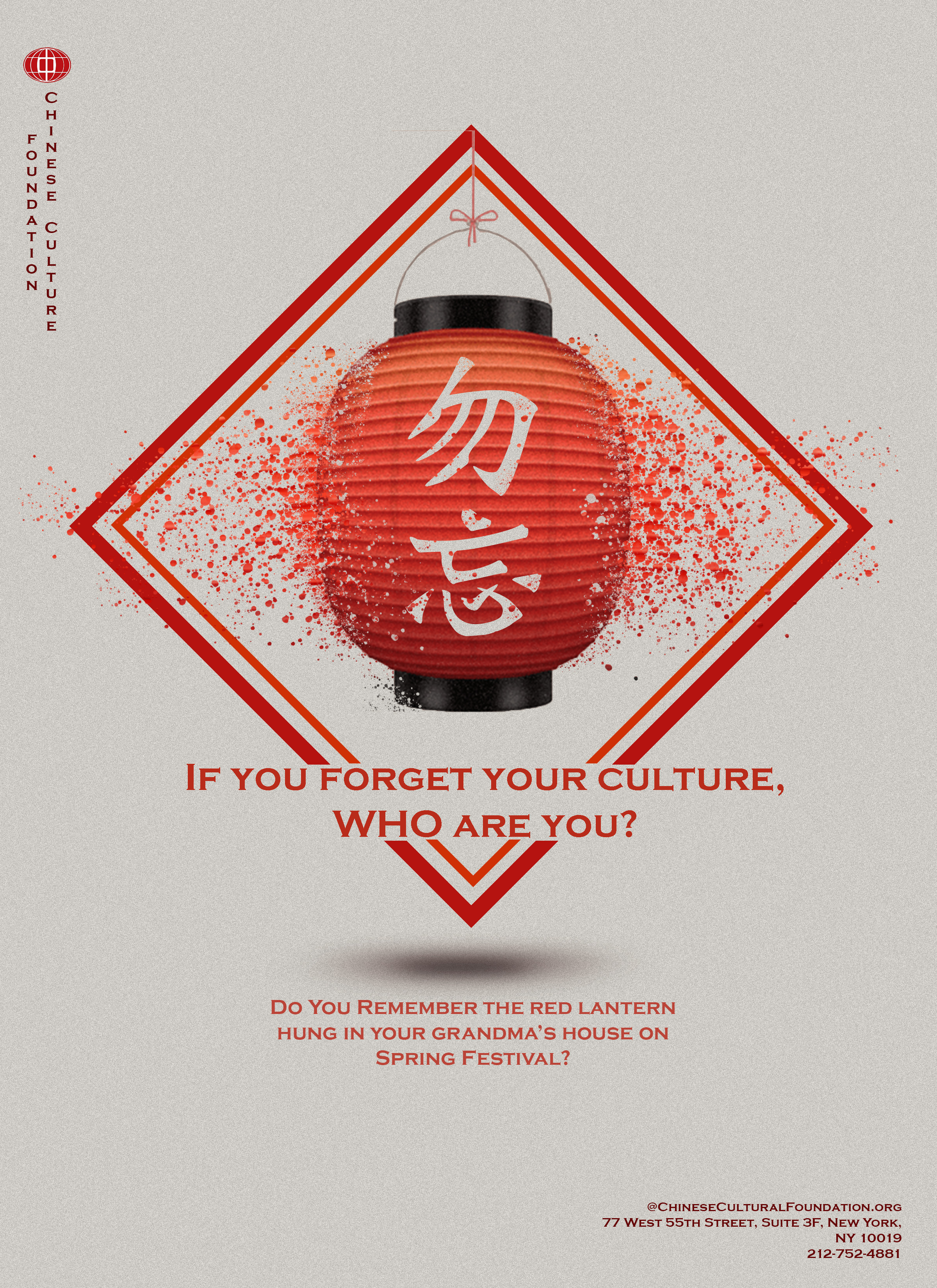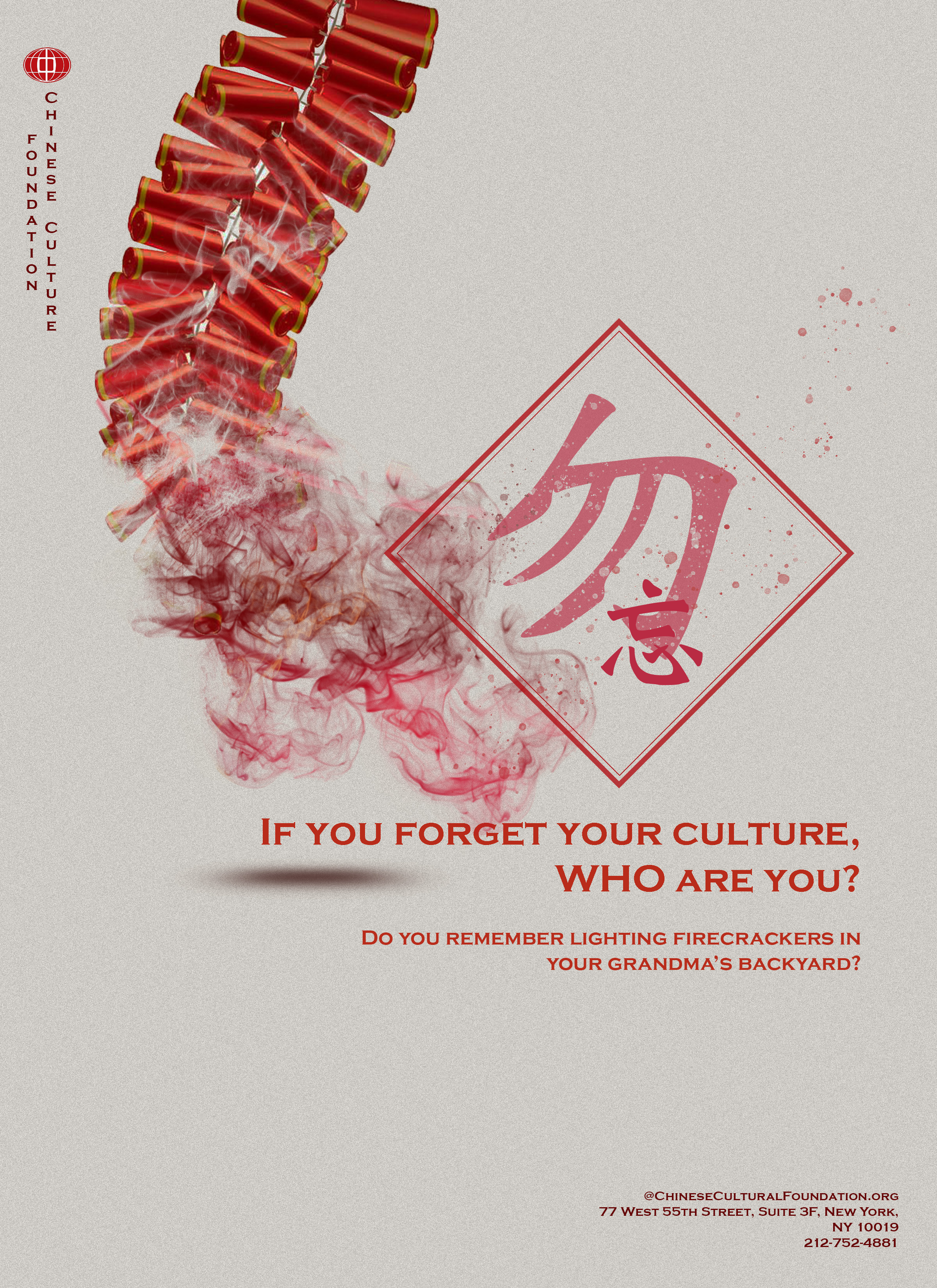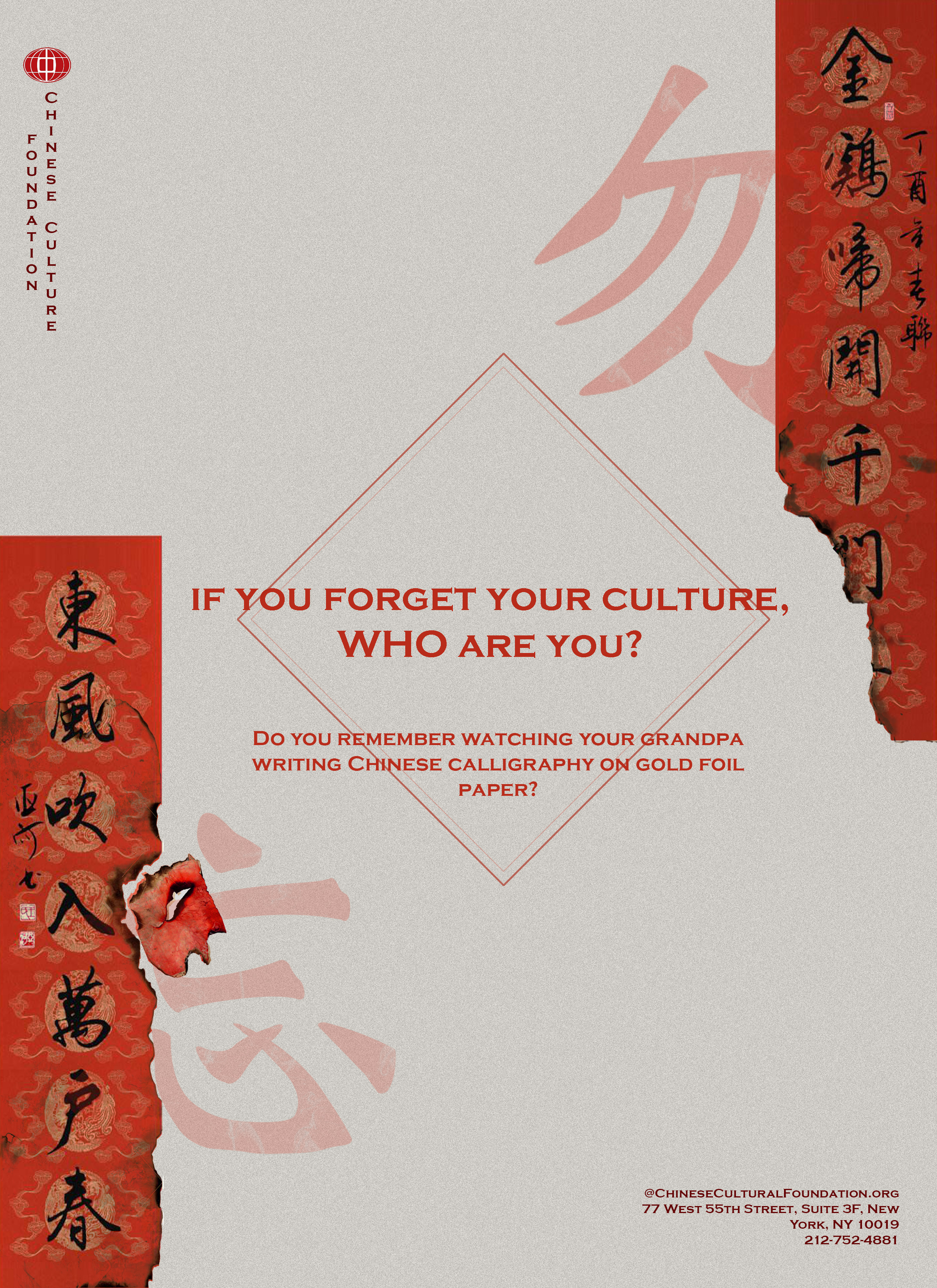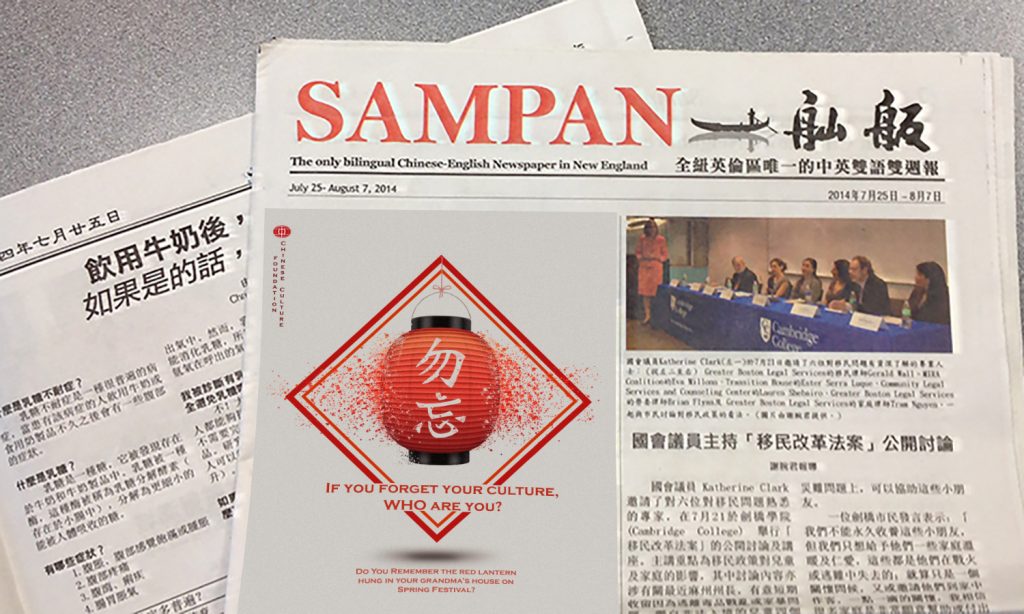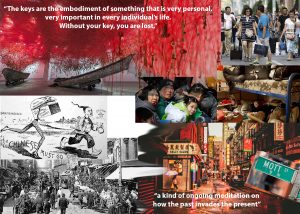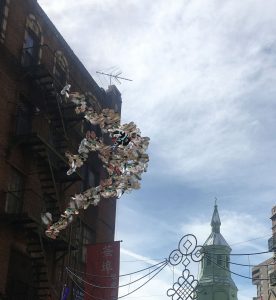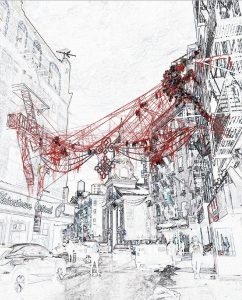Keeping up with the installation piece I made for Bridge 3, I created three posters asking new Chinese immigrants not to forget about their root and culture.
The organization I chose was Chinese Culture Foundation, a non-profit organization based in New York. It’s goal is to share the understanding of Chinese history and culture with the world.
Strategy:
Message: No matter where these Chinese immigrants live, they should not be forgetting about their culture and language.
Reasons Why: One’s culture doesn’t define but is part of the person’s identity. The life they own right now was essentially “created” by their ancestors, who was the first group immigrating to U.S. and had been an extremely hard time.
Benefit: People will at least be aware of the history and the “hidden” identity in them.
Promise: Chinese immigrants today will be proud of their Chinese identity and keep spreading and inherit Chinese culture.
*”勿忘” in English means “Don’t forget”.
Posters in real life:
